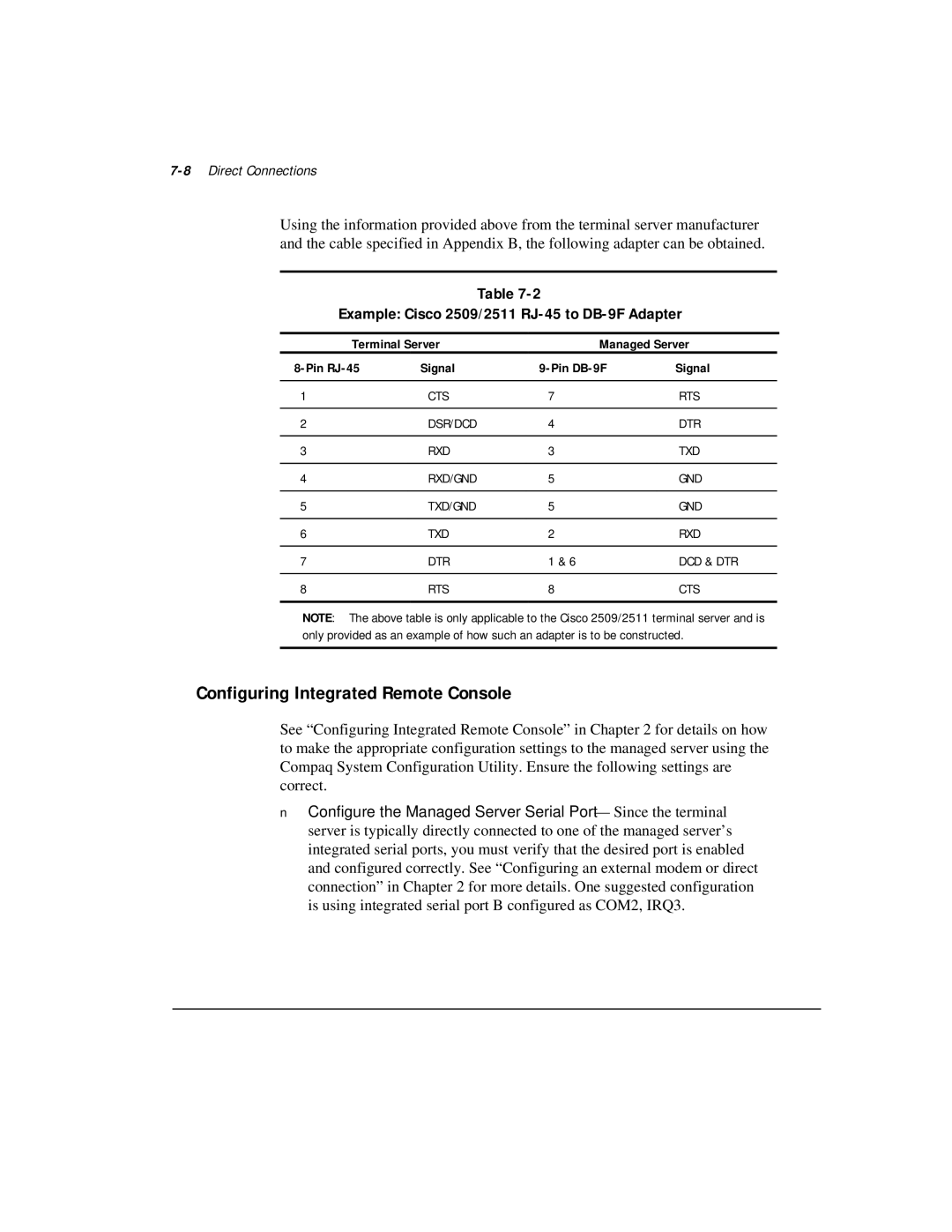
7-8 Direct Connections
Using the information provided above from the terminal server manufacturer and the cable specified in Appendix B, the following adapter can be obtained.
Table
Example: Cisco 2509/2511 RJ-45 to DB-9F Adapter
Terminal Server | Managed Server | ||
Signal | Signal | ||
|
|
|
|
1 | CTS | 7 | RTS |
|
|
|
|
2 | DSR/DCD | 4 | DTR |
|
|
|
|
3 | RXD | 3 | TXD |
|
|
|
|
4 | RXD/GND | 5 | GND |
|
|
|
|
5 | TXD/GND | 5 | GND |
|
|
|
|
6 | TXD | 2 | RXD |
|
|
|
|
7 | DTR | 1 & 6 | DCD & DTR |
|
|
|
|
8 | RTS | 8 | CTS |
|
|
|
|
NOTE: The above table is only applicable to the Cisco 2509/2511 terminal server and is only provided as an example of how such an adapter is to be constructed.
Configuring Integrated Remote Console
See “Configuring Integrated Remote Console” in Chapter 2 for details on how to make the appropriate configuration settings to the managed server using the Compaq System Configuration Utility. Ensure the following settings are correct.
■Configure the Managed Server Serial Port — Since the terminal server is typically directly connected to one of the managed server’s integrated serial ports, you must verify that the desired port is enabled and configured correctly. See “Configuring an external modem or direct connection” in Chapter 2 for more details. One suggested configuration is using integrated serial port B configured as COM2, IRQ3.
